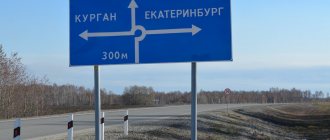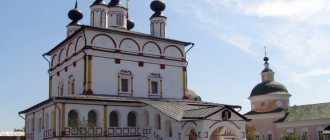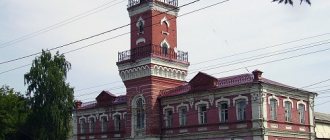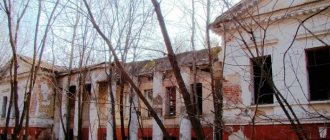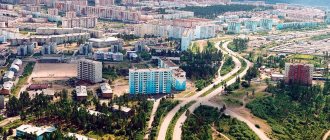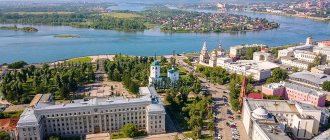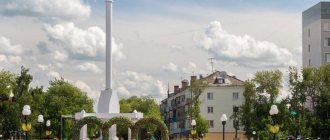Celebrations in honor of the holiday begin with the laying of flowers at the memorials with the participation of city representatives. Enterprises present their own products and services at a specialized exhibition. Projects for the Governor's Prize are published. Children and youth are invited to an entertainment program that includes competitions and games. The winner is determined and awarded the main prize.
There is a platform for fans of extreme sports. Competitions are organized between football teams. Folk craftsmen show their crafts and share their experiences. Popular performers take the stage. The memorable date ends with fireworks.
Domodedovo City Day is celebrated on the third Sunday of August. Activities in honor of the event usually begin on Friday or Saturday. In 2022, the holiday falls on August 21.
City information
Domodedovo is a city in the Moscow region. Located in the west of the Russian Federation. The economy is represented by enterprises in the construction industry and the production of equipment for the oil and gas industry.
The Moscow-Kashira highway passes through the settlement, and the M-4 Don federal highway runs nearby. The railway line and the large airport of the same name are located nearby. Universities and their branches, professional and secondary specialized educational institutions operate in the settlement. Cultural institutions are functioning. A significant part of the population is employed in the capital of the Russian Federation.
Historical reference
Historians say that 200 - 300 million years ago, the sea splashed over the Domodedovo land. Even traces of it have been preserved - deposits of limestone, on the blocks of which the imprinted remains of marine animals can be seen. The glacial era left behind deep river valleys and deposits of sand and red clay in the area. Mammoths once roamed here.
Local historians date the first mention of Domodedovo in ancient writings to 1401. For many centuries, the ancient Kashira Highway ran here, connecting Moscow with the south. The first owner of the village of Domodedovo was Elena Olgerdovna, the wife of the Serpukhov-Borovsk prince Vladimir Andreevich. And at the beginning of the 18th century, Prince A. Menshikov, an associate of Peter I, was granted the Domodedovo and Myachkovo volosts.
Since ancient times, there have been other settlements nearby. Therefore, it is quite possible to assume a more ancient history of Domodedovo villages. The Resurrection Church in the village of Bityagovo (1670), the late classicism estate in Konstantinovo on the site of the estate of the Romodanovsky princes, which belonged to the famous traveler N.M. Przhevalsky in the second half of the 19th century, and the Morozov estate of the outstanding Russian architect F.O. Shekhtel have been preserved. The Resurrection Church (1697) in the village of Kolychevo is protected by the state. In 1781, Catherine II awarded this village “the name, rights and advantages of the city” under the name Nikitsk. It was proclaimed the center of the district; 747 people lived here at that time; they were occupied “partly in arable farming, and more in breaking and preparing white stone,” from which the best buildings of Moscow, Vladimir and other cities of the Golden Ring were built. Since 1802, Nikitsk disappeared from the list of Russian cities, the name of the village of Kolychevo was restored, but the coat of arms of the ancient city became the basis of the current Domodedovo coat of arms.
The Domodedovo land remembers how in 1812 the columns of General D.S. Dokhturov and Field Marshal M.I. Kutuzov moved through the village of Yam. French troops leaving Moscow also passed along the Kashirskaya road.
At that time, quarries and flour mills stood out from industrial production. In 1825, the landowner Pokhvistnev built one of the first paper spinning factories in Russia - the oldest enterprise in the city. Then a brick and lime factory were built, and by 1908 two more factories were operating.
In connection with the reconstruction of Moscow, about 200 Muscovite families moved to Domodedovo in 1937. In 1938, a workers' settlement was formed, the number of its residents reached 8.7 thousand people.
In 1941, Domodedovo, where 14.5 thousand residents already lived, was transferred to the category of a workers' village.
The development of the village was delayed by the Great Patriotic War. In the first post-war years, Domodedovo industrial enterprises quickly restored their production potential.
Along with industrial development, housing and household construction took place.
On March 12, 1947, the workers' village was transformed into a city of regional subordination, and in 1969 a new district was formed, with its center in Domodedovo. On January 1, 2006, the area was transformed into the Domodedovo urban district.
History of Domodedovo
The history of Domodedovo dates back to the 15th century. The settlement developed on the basis of the disappeared villages: Nazaryevo and Sknilovo. During the reforms of Catherine II, it was part of the city of Nikitsk.
In 1812, Napoleon’s troops fought battles with the Russian army on its territory. After restoration, light industrial factories appeared in it. The year 1897 was marked by the beginning of construction of the Ryazan-Ural Railway. Cargo and passenger transportation was carried out along it. A station appeared, named after the village. The infrastructure and the plant grew rapidly around it.
After the arrival of Soviet power, hundreds of Muscovite families moved to the settlement. During the Second World War it was destroyed by air raids. It served as a site for the construction of engineering barriers. After liberation, production and housing were restored there. On March 12, 1947, city status was received.
A large airport was built in 1962. As part of the Russian Federation, the settlement expanded due to the annexation of a number of villages.
Domodedovo
“Domodedovo with meadows” was first mentioned in the spiritual letter of the Serpukhov prince Vladimir Andreevich, dating back to 1401, which he bequeathed to his wife Princess Elena. In 1433, the princess “blessed her daughter-in-law Ulyana with the villages of Bityagovo and Domodedovo and their villages.” Soon, as a result of a lawsuit between the Grand Duke of Moscow Vasily II and the Prince of Serpukhov Vasily Yaroslavovich, the Serpukhov prince was imprisoned, and Domodedovo was transferred to Moscow. In the 16th century, the village became the center of the palace volost of the same name and was transferred to the jurisdiction of the Konyushenny Prikaz. During the reign of Ivan IV the Terrible, the volost became one of the oprichnina volosts; the horses of the oprichniki were kept and fattened here. The first surviving description of the village is given in a scribe's book of 1646: “The village of Domodedovo near the Pakhra River, on both sides of the Rozhaya River, and in it there is a wooden church in the name of the Nativity of Christ with the chapel of St. Nicholas the Wonderworker, and on the church land there are five courtyards of the church parable and four bobylsky . In addition to the church ones, there are 57 peasant and bobyl households in the village, including a blacksmith, with 148 male souls, and one yard is empty.”
In 1654, there was a plague epidemic, after which the population decreased significantly. According to the census of 1663, 10 empty households were recorded in the village, and three Bobyl households ceased to exist altogether. By order of the authorities, 46 male peasants were resettled from other palace villages to the village, including Volodymer resident Kuzma Petrov Sizov, Ivashka Markov from the village of Myachkova, Khotun resident Mitka Kirilov, Murom resident Sidor Elistratov. During this period, the village of Pakhrino was assigned to the Domodedovo volost (disappeared at the beginning of the 20th century)
, which had an extensive princely courtyard with a large garden, stables and granaries. The volost government was moved to Pakhrino, and the formation of the sovereign's stable yard began here, in which in 1680 74 of the sovereign's horses and 41 horses of the royal falconers were kept.
In 1706, by decree of Peter I, Domodedovo, together with the volosts, was granted the patrimony of the Tsar’s associate A.D. Menshikov. The situation of the Domodedovo peasants at this time is indicated by their petition to the prince, which states that until 1707 the peasants of the volost were assigned to the orders of the large palace and “except for tithe arable land, threshing bread and all kinds of carts to the palace, they did not pay any taxes, and since 1707 they are required to pay 4 and 5 rubles from the courtyard to the treasury of the Tsar’s Majesty, and 564 rubles a year to the prince for all expenses.” The prince also requested 72 semi-annual workers for his house in the new capital, for whose food the peasants paid 202 rubles a month. The peasants' complaint remained without consequences, even after the prince's disgrace. Only in 1740 was it decided “not to collect the taxes set by Prince Menshikov from the peasants.”
With the foundation of the imperial consolidated stable in the village of Pakhrino in the 1730s, the peasants of the village were assigned to it, and their main responsibility was to serve the needs of the stable. Young village residents, instead of serving in the army, were enlisted as grooms, blacksmiths and foremen of the court stables. Under Empress Anna Ioannovna, the wealthiest residents of the village, with the permission of the authorities, began to be enrolled in the Moscow merchant class, some of them settled in Moscow.
According to data for 1765, in 49 households of the village there were 679 residents, who owned 112 horses, 63 cows, 214 sheep and 26 pigs. Three families did not have horses or livestock. According to the rules that existed in those years, palace peasants could only marry girls from the palace volosts. The revision tales of 1762 indicate that the grooms of the village took as wives fellow villagers from the neighboring villages of Zabolotye, Pavlovskoye, Bryantsevo, Beleutovo. To marry outside the volost, girls needed permission from the volost government.
In the autumn of 1770, another plague epidemic began in the village. In just a few months, 62 men and almost as many women became its victims.
During the Patriotic War of 1812, the main forces of the Russian army passed through Domodedovo, performing the famous maneuver of M.I. Kutuzov, and after them the French cavalry passed. The damage to the peasants from the movement of troops was so great that they needed government help in the form of a loan “for feeding and sowing fields” in the amount of 8,648 rubles.
In 1829, after the liquidation of the stables in Pakhrino, the village was assigned to the Bronnitsky sovereign stud farm, and after its closure in 1845, it was transferred to the department of the Moscow palace office.
According to data from 1848, the following information about the village is available: “The village of Domodedovo, 392 revision souls, the soil is silty, the fields are flat, the rye harvest itself is three and a half. The peasants are engaged in arable farming, some earn their living in Moscow as metal workers and in calico factories, others drive along the highways.”
After the reform of 1861, the first steps were taken in the field of public education. The church deacon and peasant woman M. G. Rozhkova were the first to teach 30 children at home. In 1888, a peasant from the village, Vasily Stepanovich Sizov, built a wooden parochial school with a teacher’s apartment on church land. He donated the school building to the village church.
Holiday village Domodedovo
During the peasant reform, part of the land occupied today by the city of Domodedovo was allocated as an allotment to the peasants of the village of Domodedovo and the villages of Beleutovo and Pavlovskaya. According to the charter of 1864, the allotment to the peasants of the village. Domodedovo was allocated 946 acres of land, which they bought into ownership for 24,200 rubles 5 years later. During this period, there were 423 revision souls in the village, but a significant number of them lived in the village of Stary Yam. Some of them, including A. N. Gorbachev, rented the Gorodyaikha wasteland on the large Serpukhov road, where they built inns and residential courtyards, founding the village of Gorodyaikha.
The remaining land from the allotment, overgrown with birch and aspen forest and small bushes, was included in the Domodedovo palace forest dacha in the 70s of the 19th century. On its territory, divided into blocks, planned deforestation was carried out. The Kashirskaya road that ran through the dacha was paved with stone in 1888-1889, and it became known as the highway. Adjacent to it was a cattle road along which cattle were driven from the southern provinces to Moscow.
In 1897, construction of the Moscow–Pavelets railway began. A strip of land 32 m wide in each direction from the railway line was demarcated from the forest dacha, the forest was cut down on it, and work began on filling the railway bed, building a station, and a water pipeline from the pumping station on the river. Go to the water tower and barracks for construction workers and railway employees. In the spring of 1899, railway engineer A. A. Wenzel founded a brick factory on the land of the peasants of the village of Beleutovo, and a few months later the Moscow merchant P. N. Martyanov rented 8 acres of land from the peasants of the village of Beleutovo for the construction of a cement plant and bedrooms for its workers .
Soon after the opening of railway traffic, a native of the village of Pavlovskoy, who was the first in the village to buy a plot of land as his own, and then accepted into the Moscow merchant class, Vasily Semenovich Leonov founded a timber warehouse and shop at the Domodedovo station, a peasant from the village of Novlenskoy, Matvey Yakovlevich Lapshin, opened a teahouse, later converted into a tavern, the peasant of the Bronnitsky district M. M. Zolotov maintained a buffet at the station. Near the station, the Ryazan-Ural Railway Society leased out plots of land for the construction of warehouses.
In September 1903, the Moscow Specific District held an auction for the lease of 148 dacha plots in the 4th and 5th blocks of the forest dacha, but only three people came to the auction, and the contract for the lease of a plot of land No. 85 on the bank of the river. The birth near the water pumping station is concluded only with the owner of the cement plant, Martyanov. In the 4th and 5th blocks, the owner of the Konstantinovskaya factory, R. A. Keller, was allowed to build a highway from the factory to Kashirskoye Shosse (now Sovetskaya Street).
In the spring of 1905, an advertisement appeared in Moscow newspapers: “Dacha plots. The administration of the Moscow specific district announces that 40 versts from Moscow in the Domodedovo forest dacha at the station. Domodedovo Paveletskaya line of the Ryazan-Ural railway. plots of land are rented out for the construction of dachas... The area divided into these plots is adjacent to the Rozhai River.” Two years later, the Main Department of Appanages and the society of peasants of the village of Beleutovo provided the Podolsk district zemstvo government with free and indefinite use of land for the construction of a highway from Kashirskoe highway to the station. Domodedovo, as a continuation of the Kellerovskaya road. At the same time, the administration pledged to provide free travel on this road to all tenants of summer cottages.
Among the first tenants of the plots were V. E. Savinov, a native of the Kostroma province and the head of the Martyanova cement plant since 1906, and the owner of the tavern M. Ya. Lapshin, who in 1913 leased plot No. 155 “b” of the sixth quarter for 24 years. At this time, a peasant from the village of Ovchinki, M.V. Grozilin, opened a blacksmith shop in the village, and a year later he took plot No. 156 in the same quarter to build a house. A peasant from the Vladimir province, M. A. Mitrofanov, who worked at a brick factory, also acquired a plot. From January 1, 1915, two neighboring plots were leased by the clerk and weighmaster Art. Domodedovo E. D. Poshekhonov and the peasant of the village of Novlenskaya G. M. Lapshin. By this time, 32 people lived in four station buildings and 77 in eight houses of the station village. In the summer, almost 700 people huddled in 14 factory barracks. However, during the First World War, the number of workers at the factories decreased sharply, and from October 1917 the factories stopped altogether. After nationalization in 1918, V. E. Savinov, who bought the cement plant in installments, was appointed manager of the plant and at the same time its watchman.
The issue of land use in the village turned out to be very painful. Pre-revolutionary contracts for renting plots became invalid, and the volost land committee in 1918-1923 allowed residents of the village to use land plots in the sizes that actually existed. However, in 1927, the authorities recognized the committee’s resolutions as “illegal” and invited land users to enter into new lease agreements. The latter, especially those who used not only estate plots, but also field land, turned to the Presidium of the Moscow Soviet with a request to send a commission to the site. A commission with the participation of the authorized village council L. G. Kolesnikov examined part of the village’s farms in October 1928 and found that residents of 12 out of 30 households were engaged primarily in agriculture, owning field lands ranging from one to four dessiatines, and a total of 30.5 dessiatines . They had 10 horses, 13 cows, 21 sheep and 7 piglets. They all lived in wooden houses on stone foundations, with apple, plum, cherry, strawberry and raspberry trees planted on their estate plots. Many of them rented out part of their residential premises as apartments to factory workers and employees and as dachas to Muscovites.
Due to the fact that the village’s lands were planned to be divided into plots for development, the county land department in April 1929 warned the owners of arable and meadow land to sow the land exclusively with spring crops, concluding short-term contracts with the volost committee for a period until October.
Meanwhile, the economic base of the village was strengthened. Since 1923, the brick factory resumed production, producing 2.3 million bricks per season, and by 1930, increasing brick production to 14.2 million. In 1928, the cement plant began production. In 1930, these factories already employed 820 people, and new barracks were built for them. A workers' cooperative was formed in the village, of which 500 people became members, and a building was built on Kashirskoe Highway, which housed the board, warehouses and shops. The house and teahouse of G.M. Lapshin were given to him. The outpatient clinic and the first kindergarten began operating.
Workers' settlement Domodedovo
The resolution of the executive committee of the Podolsk district council in 1934 states: “Taking into account that in the village of Domodedovo, out of 2,500 residents, the number of workers at the brick, silicate factories and railway station is over 1,000 people, in addition, 500 people permanently live in the village as summer residents, and that the population of the village is completely unconnected with agriculture, in order to enhance the improvement of the village and the management of industrial life ... to ask the Moscow Regional Executive Committee to include the village of Domodedovo in the list of workers’ villages in the region with the organization of a village council.”
However, this request remained without consequences. In accordance with the resolution of the Presidium of the Moscow Soviet of December 21, 1928, the village was officially called a dacha settlement. The reconstruction of Moscow was fateful for the village, in connection with which 1,200 Muscovite families had to be relocated from the dilapidated houses of the capital to the Domodedovo village. By decision of the Podolsk District Council, 265 hectares of land adjacent to the existing village were allocated for new housing construction, including 60 hectares for workers and employees of factories and the railway station. By mid-September 1937, the first 200 families moved to the village. New settlers built up Zavodskaya, Lesnaya, Dachnaya, Novo-Moskovskaya, Zapadnaya streets and Moskovsky passage. The newspaper “Podolsky Rabochiy” in the issue of March 31, 1938, in the workshop of “Santekhmontazh”. With funds from the Moscow city and regional councils, paving of central streets and sidewalks began in the village. A new bakery with a capacity of 10 tons of bread per day, a secondary school for 280 students were built, wells were dug, a pharmacy was opened, and the drilling of the first artesian well began.
In 1939, the dacha village of Domodedovo was transformed into a working village with a population of 10 thousand people and continued to be built up. In the last three pre-war years alone, 900 residential buildings were built here, Pervomaiskaya and Novaya streets appeared, a brick factory began building two-story brick houses for its workers, Moscow was allowed to build 12-apartment buildings in the eastern part of the village, construction of water supply headworks began, and a collective farm market was opened. .
The outbreak of the Great Patriotic War interrupted the development of the village, radically changing all areas of its life. Many of its residents were conscripted into the army or joined the people's militia. The activities of the rest were subordinated to the needs of the army and measures to defend the capital. Brick work was stopped, the metal structures plant carried out special orders for defense purposes, producing embrasures, hedgehogs, and gas tanks. The production workshops of the regional industrial complex produced felted shoes for the army, and sewed underwear and padded jackets for soldiers. The railway station workers played a particularly important role in the defensive measures. The profile of the station chief, V.N. Domogatsky, states: “From October 19, 1941 to January 25, 1942, he unloaded materials arriving at the station for the construction of defense lines, carrying out special assignments. How the station manager rallied the entire team to uninterrupted and efficient work, to the rapid and accident-free movement of trains, and facilitated the rapid loading and unloading of military trains. During the period of enemy air raids, he was at his post and took an active part in quickly eliminating the consequences of the raids.”
Repair workstations G.V. Bezlepkin, F.G. Davydov, A.F. Kostyukov, being in a barracks position, urgently restored the tracks destroyed by bombing on the Domodedovo - Belye Stolby, Belye Stolby - station sections. Barybino. Trackman K.P. Konopkin On October 25, 1941, during a bombing on the Domodedovo-Leninskaya stretch, he prevented the crash of passing military and commuter trains.
It is difficult to overestimate the contribution of the village residents to the construction of defensive structures. Many of them participated in the construction of an anti-tank ditch from the village of Ovchinki to the station. Domodedovo, forest debris in the Salkovo - Domodedovo - Pushkino section, defensive lines in the area of Domodedovo - Zaborye village. Among those awarded the medal “For the Defense of Moscow” were 22 employees of the Domodedovo station, 21 of a metal structures plant, 8 of a refractory plant, director of workshops I. N. Gavryushin, teacher of school No. 1 N. S. Robustova and others.
During fascist air raids, the procurement shop of the welding base was destroyed, a metal structures plant, a railway station, power and communication lines, and some residential buildings were damaged.
Peaceful life had to begin in the most difficult conditions. The housing stock of the village has fallen into an extremely disrepair. The factory barracks were overcrowded and required major repairs, and some of them were on the verge of collapse. Things were no better in the private sector. Each of the 1,121 households had two or more owners. The village council was inundated with requests for permission to rebuild terraces, verandas and even barns for housing. Of the 42 streets and passages, some, incl. Pavlovskaya, Polevaya, Narodnaya were just beginning to be built up. Electricity was available only in some houses, the construction of a water supply system had been mothballed since the beginning of the war, the water in some wells was unsuitable for consumption without boiling, food was distributed using ration cards.
The council planned to build 1000 sq. m. in 1947. m of new living space and repair 33 houses, illuminate central streets, repair 12 wells, lay 2,100 linear meters of water supply network, install 12 water intakes, build a radio center.
City of Domodedovo
By 1947, the village of Domodedovo consisted of 1,573 houses with a population of 20,300 people. Taking into account the population size and the prospects for its development, on March 12, 1947, the Presidium of the Supreme Council of the RSFSR adopted the Decree “On the transformation of the workers’ village of Domodedovo, Podolsk district, Moscow region, into a city of regional subordination.”
In the 1950s In the city, new enterprises were built and old enterprises were reconstructed: a metal structures plant (), a building materials and structures plant, a fire-resistant products plant, a sewing and knitting factory. New social facilities were built: a school for 400 students, a city council building, a maternity hospital, a library, and retail establishments. Active construction of the Zhilposelok microdistrict was underway. In 1956, the village of the Konstantinovskaya factory was included in the city limits, which became the Domodedovo microdistrict.
By the beginning of 1959, the city's population was 27.7 thousand people. In 1962, the Avangard cinema began operating, and in 1966, the main building of the city hospital on Pirogov Street.
In 1962, construction of the Moscow Domodedovo Airport began near the city; on March 25, 1964, the first passenger flight from Moscow to Sverdlovsk took off from here. Since 1966, regular passenger flights have been operating from Domodedovo Airport.
By the end of the 1960s. Domodedovo has become a large industrial center. On January 1, 1969, the population exceeded 35,000 people. The city had 9 industrial enterprises, six secondary schools, a music school, a branch of the Podolsk Industrial College, a cinema, three clubs, a house of pioneers, and sixteen libraries.
On April 27, 1969, by Decree of the Presidium of the Supreme Soviet of the RSFSR No. 741/2, the Domodedovo district was formed. The city of Domodedovo became its administrative center - a city of regional subordination.
In 1971, a master plan for the development of the city was approved. The first 9-storey building was built on the station square. The building of the city party committee and the city council was commissioned. In 1990, the Mir cultural center was built. In 1997, construction of the Druzhba microdistrict began. In 2000–2001 Multi-storey brick buildings are being erected along Kashirskoe Highway on the site of demolished wooden houses.
In 2004, the working village of Vostryakovo and the village of Belye Stolby were annexed to the city. In 2007, the city included the villages of Zaborye, Metkino, Rozhdestvenskoye, Ushmary and the village of Shebantsevo.
On January 12, 2005, the municipal formation of the Domodedovo urban district was formed as part of the Moscow region, and the Domodedovo district was abolished.
Coat of arms
The Domodedovo coat of arms is presented in the form of a French shield. There is a red stripe at the top. Below it is a golden background, on top of which is an azure pillar (the symbol of the airport). Below are three lowered silver bars, with the top and left edges visible. They are stacked in the rafters. They symbolize modern industry focused on the production of building materials. In the upper left part is the coat of arms of the Moscow region (this is an optional element).
The artistic composition is based on a version of the now defunct city of Nikitsk. Adopted by the Decision of the Council of Deputies of the Domodedovo District of March 22, 2002 No. 37/5.
Religion
On May 6, 1991, the Domodedovo deanery of the Moscow diocese was formed, and the city became its center.
The Church of St. Seraphim of Sarov, the Cathedral of All Saints Who Shined in the Russian Land and the Church of the Nativity of Christ were erected in the city. Since 2000, an Orthodox gymnasium began operating at the cathedral.
On May 16, 2007, the Domodedovo Vicariate of the Moscow Diocese was established, named after the city of Domodedovo.
Temples
- Boris and Gleb
- "The Queen of All", icons of the Mother of God
- All Saints who shone forth in the Russian land, Cathedral
- St. George the Victorious
- Demetrius of Thessalonica
- John of Kronstadt
- Cosmas and Damian
- "Burning Bush", icons of the Mother of God
- Nicholas the Wonderworker
- New Martyrs and Confessors of Domodedovo
- Peter and Fevronia
- Nativity of John the Baptist
- Nativity of Christ
- Nativity of Christ in the village of Barybino
- Seraphim of Sarov, baptismal
- Tikhvin Icon of the Mother of God
- Feodorovskaya Icon of the Mother of God
The city of Domodedovo has its own legend
As part of a project designed to perpetuate the history of its native city, MegaFon will give the city of Domodedovo a new landmark - a sculpture of Grandfather Domodel. The name of the town of Domodedovo near Moscow comes from the legend of an old bird catcher. His nickname gave the name to the village of the same name, which is mentioned in written sources starting from the 15th century, and then to the modern city. In the album “History of the Principality of Serpukhov” it is said this way: “And the village on the wasteland near Serpokhov, across the river, was named in the name of the Elder Domodel. For they say that in those places the old man lived much more skillfully, he always caught birds in the forests, and he made beautiful cages from vines. And he did not trade them every day, but only on Saturdays and Sundays, and on other days he gave birds and cages to girls who were already in marriage. For this reason, this old man was revered for his skillful deeds and was nicknamed Do-Model.” In other words, the elder gave the newlyweds birds and skillfully woven cage houses as a symbol of a prosperous married life, or perhaps as a talisman so that good things would accumulate and not be transferred. Perhaps rumors about him spread during his lifetime, and the area where he lived began to be called “Domodelova”, which by the 15th century turned into “Domodedovo”. The Domodel sculpture is a gift to the city of Domodedovo as part of the “MegaFon Gives a Legend” project. One of the goals of this project is to attract the attention of residents to the history of the city and create an important city landmark associated with traditional family values. Today, many people want to learn more about their native places, to feel the connection between times and generations. Therefore, the appearance in the city of a sculpture that will remind residents of the main local legend is an important contribution to strengthening city traditions. The sculpture of Grandfather Domodel with a wicker basket over his shoulder, located in the city park next to the Alley of Lovers, will become the center of cultural leisure for citizens, an attraction for tourists, a venue for children's parties and, of course, wedding ceremonies. Starting a family is one of the main and brightest moments in the life of every person. And the wedding ceremony is that very step towards the future, which the newlyweds will then remember with warmth all their lives. The sculpture will not only remind them of history, but also, quite possibly, will bring good luck - after all, it was thanks to the wonderful art of Domodel that news of him not only reached our days, but also gave the name to the whole city.
Information note The author of the monument is Kirill Chizhov, a young talented sculptor, a student of the famous A.I. Rukavishnikov, a graduate of the sculpture department of the Surikov Moscow State Academy of Arts. Almost at the age of 20, he became a prize-winner of the All-Russian Competition of Young Artists at the State Tretyakov Gallery, and soon became a member of the Moscow Union of Artists. Art critics consider Kirill one of those few modern creators who are capable of bringing light, strength, and spontaneity. Having experienced the influence of many styles in his development - academicism and neo-academicism, surrealism, avant-garde and postmodernism, Kirill Chizhov created his own style - a lively, confident, eclectic and very energetic fusion, with a subtle taste and flair for even the smallest details.
Any use of materials is permitted only if there is an active link to the Domodedovo city website

